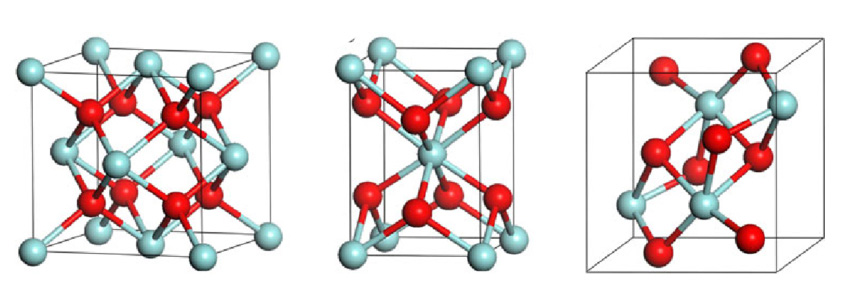WELCOME TO CALL US +86 18122974730 Email:admin@mingruiceramic.com
Wear-resistant ceramic materials are widely used in grinding and polishing materials, wear-resistant coatings, pipe or equipment lining, equipment structures and other fields, and their wear resistance directly determines the safe service life of mechanical equipment and parts.
Wear-resistant ceramic materials are widely used in grinding and polishing materials, wear-resistant coatings, pipe or equipment lining, equipment structures and other fields, and their wear resistance directly determines the safe service life of mechanical equipment and parts.
Common wear-resistant ceramic materials are zirconia, alumina, cubic boron nitride, silicon nitride, boron carbide, silicon carbide, and so on.
In order to obtain wear-resistant ceramic materials with better wear resistance, many scholars have studied the wear mechanism of ceramic materials and the factors affecting the wear resistance of ceramics, and put forward many viewpoints and conclusions.
Generally speaking, there are two factors affecting the wear resistance of ceramics: 1, the structure of the material itself; 2, external factors such as load, temperature, and atmosphere.
Based on the structure of the material, this paper briefly analyzes the factors affecting the wear resistance of wear-resistant materials.
1.The influence of mechanical properties on the wear resistance of ceramics
In the early research on the wear resistance of ceramic materials, people believed that the hardness of ceramic materials has a great relationship with wear performance. Later, it was found that the relationship between the hardness of ceramics and wear is not so obvious. For example, the hardness of alumina ceramics is higher. Compared with TZP zirconia ceramics, the wear resistance is not necessarily higher than that of TZP ceramics.
Although the hardness can reflect the bonding strength of the grain boundary to a certain extent, the wear is ultimately formed when the material is separated from the wear surface. Therefore, the hardness of the ceramic material is no longer used as a predictive indicator to measure wear. There are also reports that the brittleness of ceramic materials directly affects the wear rate. Studies have shown that with the increase of material fracture toughness and hardness, the wear rate of ceramics gradually decreases and the wear resistance is better.
2.The influence of ceramic microstructure on wear resistance
Under normal circumstances, the microstructure of the material tends to have a great influence on the macroscopic properties of the material. Ceramic material is a sintered body composed of crystal grains and inner crystals, and its microstructure often determines its macroscopic properties. Many studies have shown that the wear resistance of ceramic materials is greatly related to the size of the crystal grains, the composition of the grain boundary phase, the stress distribution on the grain boundary, the pores, and other microstructures.

a. The influence of grain size on the wear resistance of ceramics
Industrially, metal materials can improve their mechanical properties by refining their grains, which is the so-called fine-grain strengthening. The principle is that the smaller the grain size, the larger the area of the grain boundary, and the more tortuous the distribution of the grain boundary, which can effectively increase the path of crack propagation and help disperse the stress concentration inside the material. People have found through research that grain refinement also has a certain effect on the wear resistance of ceramic materials.
Scholars have studied the wear resistance of alumina and zirconia wear-resistant ceramics and found that the smaller crystal grains are mainly plastic deformation and partial transgranular fracture, and there is less wear; the larger crystal grains are mainly formed by the inner edge The crystal fractures, and even large crystal grains are pulled out from the material, and there is greater wear. The pulling out of large-size crystal grains will cause larger defects on the ceramic surface, which will cause stress concentration in the material, crack propagation, and low-stress brittle fracture of the material.
b. The effect of porosity on the wear resistance of ceramics
Pores have a very important influence on the performance of ceramics. Pores are equivalent to the existence of a kind of defect, which will cause stress concentration, accelerate the propagation of cracks, reduce the bonding strength between grains, and seriously affect the mechanical properties of ceramic products. Under the action of friction, the pores may be connected to each other to form a source of cracks, accelerating the wear of the material.
In addition, some studies have found that the wear rate of ceramics is different under different loads, and the pores will not cause crack propagation under low load; while under high load, the pores become unstable and will form at the pores. Cracks and propagation cracks lead to extremely high product wear rates and weaker wear resistance capabilities.
c. The influence of grain boundary phase and intergranular impurities
Ceramics are composed of grains, grain boundary phases, and pores. During the sintering process, some additives and some impurity components added to the ceramic are mainly present in the grain boundaries in the form of “the second phase” or “glass phase” Above, their presence will have a certain impact on the bonding strength between the crystal grains. In the process of ceramic friction and wear, cracks are easily generated at the grain boundaries. The lower bonding strength of the grain boundary will cause intergranular fracture during the wear process, causing the pull-out of the entire crystal grain and causing serious wear.
Polycrystalline ceramic additives generally exist in the form of the glass phase on the ceramic grain boundaries. During the friction process, the high temperature generated will reduce the viscosity of the glass and cause plastic deformation. If the stress of the adjacent grain boundaries cannot be adapted, it will Initiate cracks at the grain boundaries, causing severe wear.
Mingrui Ceramic deals in wear-resistant ceramic parts custom manufacturing and precision machining, products including ceramic tubes, ceramic sheets, ceramic rods, etc. Welcome to inquiry.